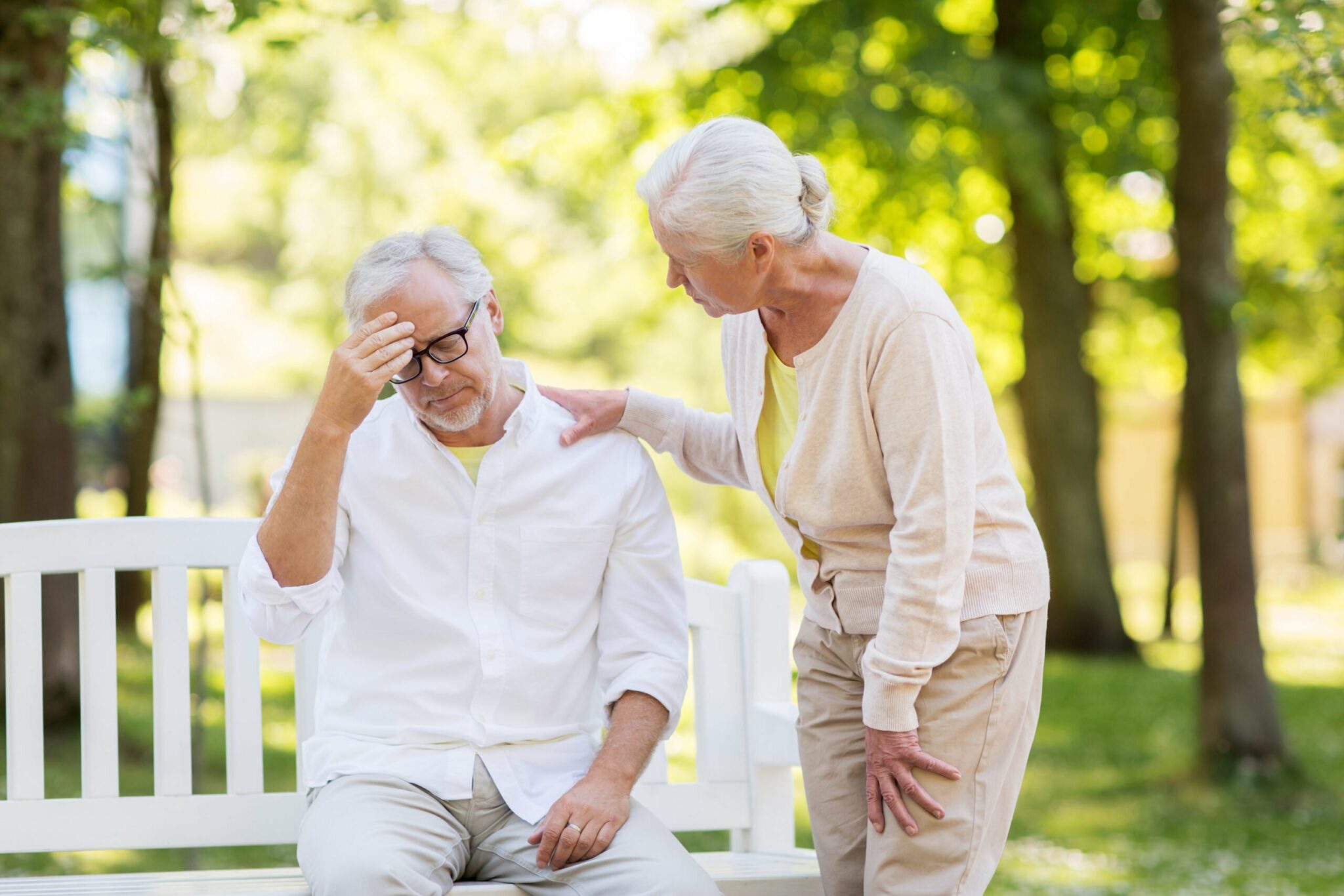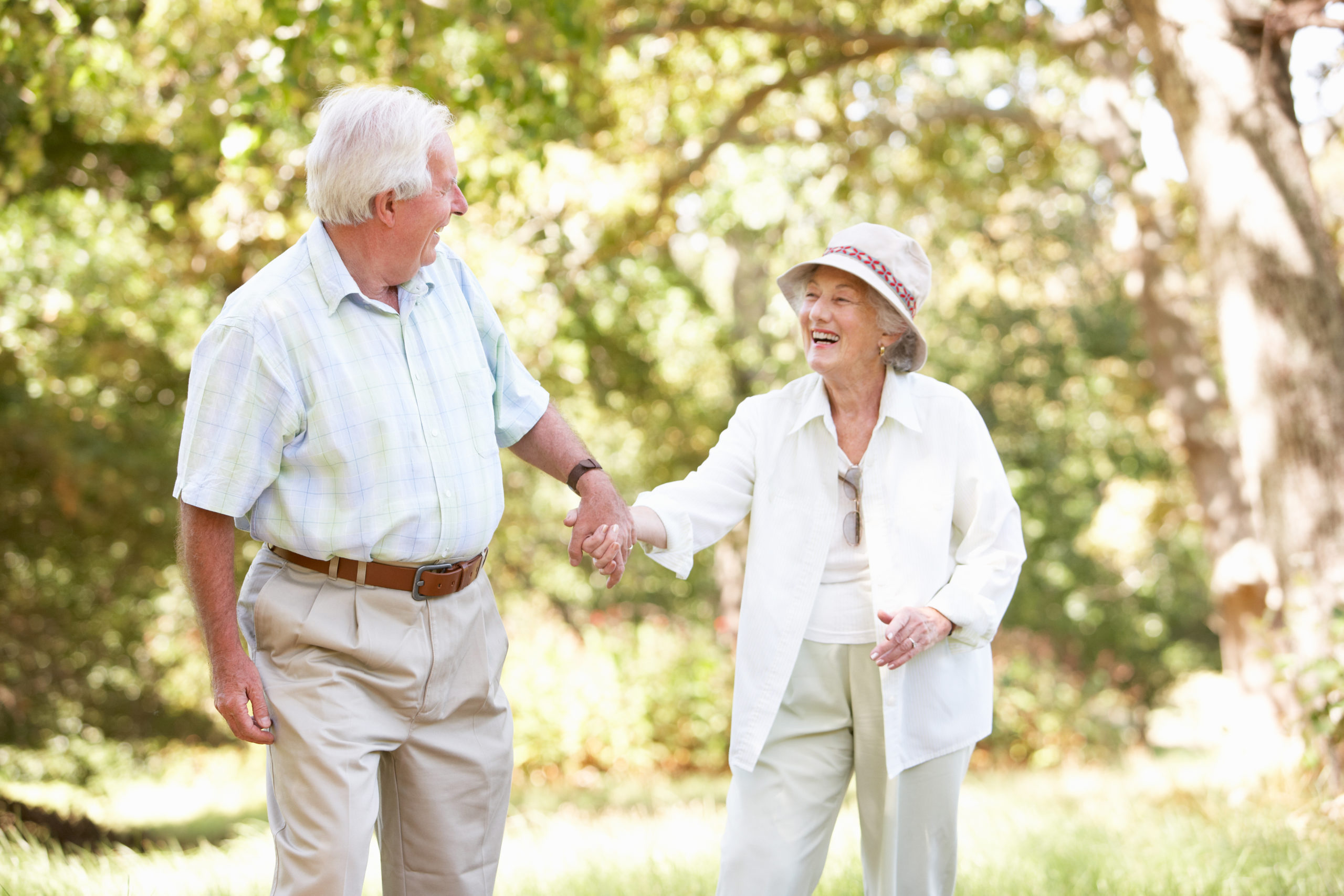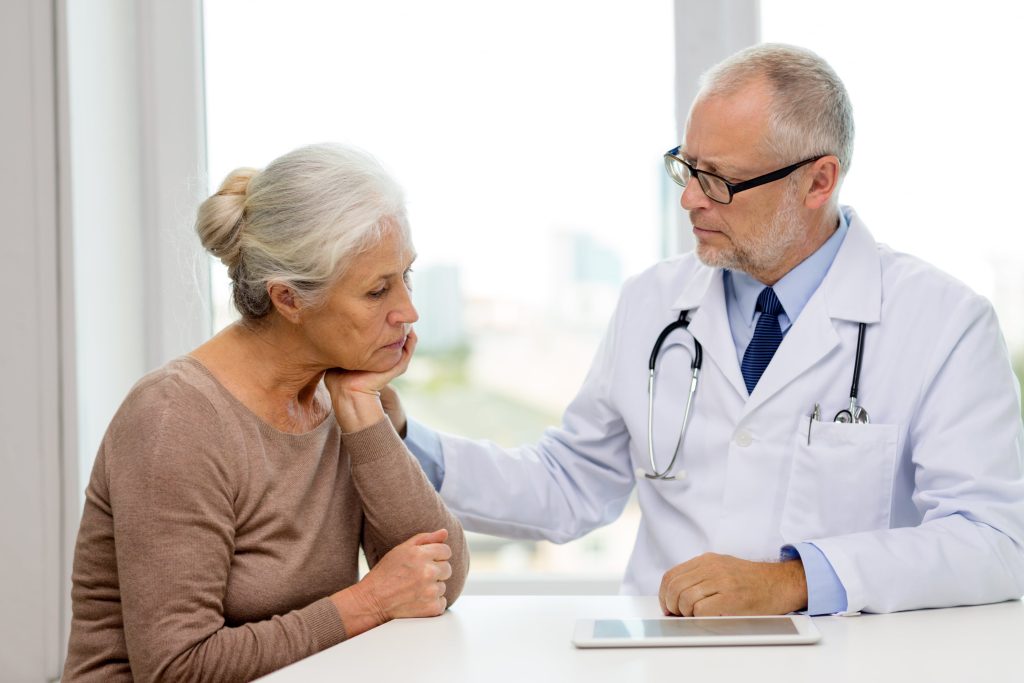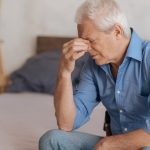Updated on March 28, 2023
Medically reviewed by Nicholas R. Metrus, MD
Parkinson’s disease is a neurological disorder characterized by tremors and affects muscle and motor function.1 It leads to challenges that interfere with daily life, such as mobility, speech, sleep, memory, mental health, and more.2
Learn about the early signs and symptoms of Parkinson’s and the causes, diagnosis, and disease progression.
Early Signs and Symptoms of Parkinson’s Disease
One early symptom of Parkinson’s is tremors, which begin mild but progress over time to include rigid muscles and mobility challenges.2 Tremors can affect the fingers, hands, arms, legs, jaw, and head, occurring in a rolling motion rather than shaking.34

Other early signs of the disease are walking slower than usual and having constipation.5 Up to 60% of people with Parkinson’s also experience dementia.2
Additional Parkinson’s disease symptoms include:5
- Balance challenges
- Changes in sense of smell or taste
- Constipation
- Difficulty walking or moving
- Frequent need to pee
- Loss of facial expressions
- Memory loss
- Mood or mental challenges
- Rigid or stiff muscles
- Rolling tremor
- Sleep challenges
- Slowed movements
- Speech challenges
What Causes Parkinson’s?
Parkinson’s disease occurs when brain cells (neurons) in the part of the brain responsible for movement are damaged or die. When this happens the brain cannot make dopamine, a chemical messenger linked to attention and movement.3
Researchers don’t completely understand why this happens to some people. Still, they theorize that it is partially due to genetics and external factors such as pollution and harmful substances used in farming.6
Risk Factors for Parkinson’s
Age is the primary risk factor for Parkinson’s disease, with 60 being the average age at diagnosis. It occurs more often in people assigned male at birth than those assigned female. Genetics is another concern, so people who have a family member with Parkinson’s disease are at an increased risk.6 Other risk factors include:7
- Environmental pollution exposure
- Farm chemical exposure
- Injury to the head
Video: “Rehabilitation of the patients with Parkinson’s Disease”
SET OF EXERCISES №1 FOR PARKINSON’S DISEASE: IMPROVING JOINT MOBILITY AND INCREASING BODY FLEXIBILITY
For additional information about Rehabilitation of the patients with Parkinson’s Disease you can watch a video demonstrating exercises and rehabilitation recommendations.
How Is Parkinson’s Diagnosed?
Getting a Parkinson’s diagnosis typically begins with an office visit in which a healthcare provider or specialist, like a neurologist, will ask questions about your symptoms and take a personal medical and family history. They may also perform tests to evaluate your movement, speech, and other tasks.8
While testing alone cannot diagnose this condition, an imaging test called DaTscan can show parts of the brain to help the provider determine if your symptoms are caused by Parkinson’s disease or something else.9
Age of Diagnosis
The average age of diagnosis is 60, with up to 90% of people with Parkinson’s disease diagnosed after they turn 50.63 When people experience symptoms earlier, it is generally linked to genetics.3
Accepting a Parkinson’s Diagnosis
It may take time to adjust and process the news after being diagnosed with Parkinson’s. The disease can be physically and emotionally challenging and impact your social life. It may help to learn more about Parkinson’s disease, take advantage of available resources, and be proactive by prioritizing physical activity and other things that may alleviate or delay the progression of symptoms.10
SET OF EXERCISES №2 FOR PARKINSON’S DISEASE: STRENGTHENING OF THE MUSCULOSKELETAL AND MUSCULAR SYSTEM, ENDURANCE
Can You Prevent Parkinson’s Disease?
While some people may be at a greater risk for Parkinson’s disease through genetic or environmental factors, some things can be done to prevent the progression of it. Adopting a healthy diet and regular exercise routine can help reduce the risk.11 Additionally, early diagnosis may help with treatments to prevent disease progression.12
Treatment and Management of Parkinson’s Disease
The treatment for Parkinson’s disease depends on individual needs, symptoms, and preferences.13 Some possible treatment options include the following:
- Medications (oral, injections)
- Nutrition changes
- Occupational therapy
- Physiotherapy or physical therapy
- Regular exercise or daily movement
- Speech and language therapy
- Surgery, such as deep brain stimulation
Complications in Parkinson’s Patients
Parkinson’s disease can lead to complications and health challenges. For example, severe rigidity, tremors, or balance issues can lead to falls.14 People with Parkinson’s may also experience mental challenges like psychosis and hallucinations.14 Additional conditions often occur in conjunction with Parkinson’s disease, including depression, sleep disorders, or cognitive difficulties.15
Co-Occurring Conditions
Nearly 70% of people with Parkinson’s disease also have high blood pressure.15 Many people with Parkinson’s disease, especially older patients, also experience depression, anxiety, or both.2 Sleep disorders are also associated with Parkinson’s disease, such as circadian rhythm disruptions, insomnia, and REM (rapid eye movement) sleep behavior disorder.16
A SET OF EXERCISES №3 FOR PARKINSON’S DISEASE: IMPROVING THE COORDINATION AND “COMPOSITION” OF MOVEMENT – DIVIDING IT INTO COMPONENTS
Parkinson’s Resources, Coping, and Support
Many resources are available for people with Parkinson’s, and there are many ways to cope.17 The support strategies you choose depend on your experience with the disease. For example, many people experience stress that makes their symptoms worse. Stress management practices such as exercise and mindfulness may help relieve symptoms.18

Additional support options include:
- Mental health: Anxiety and depression are common with Parkinson’s disease; resources are available through the Parkinson’s Foundation Helpline at 800-473-4636.19
- Mobility: Complementary treatment options such as massage therapy, tai chi, and yoga can help with mobility, balance, flexibility, and stability.20
- Caretakers: Those who care for people with Parkinson’s play a crucial role in monitoring the progression of symptoms, medication adherence, and providing practical and emotional support.21 Caregivers need to practice self-care and seek help when needed.
- Parkinson’s organizations: Multiple organizations are dedicated to providing resources for people with Parkinson’s. Such organizations include the American Parkinson’s Disease Association, Parkinson’s Foundation, and the Michael J. Fox Foundation for Parkinson’s Research.
A SET OF EXERCISES №4 FOR PARKINSON’S DISEASE: BALANCE, GAIT IMPROVEMENT AND FALL PREVENTION
Outlook for Parkinson’s Disease
Advancements in treatment options for Parkinson’s have increased longevity for people with the disease. People with Parkinson’s disease tend to live as long or close to as long as people without the disease. However, it puts a strain on the body and mind, which can contribute to co-occurring conditions that lead to worse health outcomes.22 Even though symptoms typically progress slowly, seeking care early and regularly is important.3
Worsening Parkinson’s Disease and Associated Triggers
Summary
Parkinson’s disease is a medical condition that causes tremors, difficulty with mobility, and cognitive challenges. It is typically diagnosed later in life, with 60 being the average age of diagnosis. There is no definitive cause. Men are more likely to be affected than women, and genetic and environmental factors such as exposure to pollution may contribute to disease development. Eating a balanced diet and exercising regularly may help reduce your risk. Treatments include medications and therapy.
By Ashley Olivine, Ph.D., MPH
Dr. Olivine is a Texas-based psychologist with over a decade of experience serving clients in the clinical setting and private practice.

Physiotherapy and rehabilitation
Rehabilitation methods for Parkinson’s disease, prescribed by a qualified specialist in physiotherapy and rehabilitation, combined with drug therapy, can significantly improve the quality of life of patients, improve motor and cognitive functions, and reduce the symptoms of the disease.
To maintain the health of patients with Parkinson’s disease, it is important to combine different operations and activities. Every day, you can combine and vary as follows – strength training, walking training, exercise bike training, training to improve joint flexibility, improve posture and balance. Of course, it is important to combine training with daily activities and, therefore, to practice the functions used in everyday life: sitting, getting up (from bed, from a chair), mobility in bed, etc.
The process of rehabilitation and treatment of patients with Parkinson’s disease, of course, depends on the disease stage (primary or progressive). But regardless of this, the process of developing and forming a rehabilitation program should take into account four main areas:
-
Improve joint mobility and increase body flexibility
-
Strengthening the musculoskeletal and muscular system, endurance
-
Improving the coordination and “composition” of any movement – dividing it into components.
-
Improve balance, gait and fall prevention
As recent studies have shown, for patients with Parkinson’s disease, it is important to form a rehabilitation plan based on a stepwise, gradually changing training rhythm and increasing exercise difficulty. Constancy and monotony in the choice of physical activity and activity is not recommended.
Check out the demo version of our sets of exercises for Parkinson’s Disease on YouTube
Our website presents the following sets of exercises for the rehabilitation of the patients with Parkinson’s Disease:
-
SET OF EXERCISES №1 FOR PARKINSON’S DISEASE: IMPROVING JOINT MOBILITY AND INCREASING BODY FLEXIBILITY
-
SET OF EXERCISES №2 FOR PARKINSON’S DISEASE: STRENGTHENING OF THE MUSCULOSKELETAL AND MUSCULAR SYSTEM, ENDURANCE
-
A SET OF EXERCISES №3 FOR PARKINSON’S DISEASE: IMPROVING THE COORDINATION AND “COMPOSITION” OF MOVEMENT – DIVIDING IT INTO COMPONENTS
-
A SET OF EXERCISES №4 FOR PARKINSON’S DISEASE: BALANCE, GAIT IMPROVEMENT AND FALL PREVENTION
FREQUENTLY ASKED QUESTIONS
1. How do Parkinson’s disease symptoms differ between men and women?
Men are more likely to have Parkinson’s related cognitive problems than women and more severe problems with freezing gait, drooling, and bent spine.4 Women are more likely to suffer from fatigue, depression, restless legs, pain, and tremors, and they have a higher risk of falling.
2. Is loss of a sense of smell a sign of Parkinson’s disease?
Yes. Loss of smell is common with Parkinson’s disease, but other conditions can cause it, too.5 Your sense of smell gradually lessens over time, so you may not realize it’s diminished until you’ve already developed other symptoms.
3. Do all people with Parkinson’s disease shake uncontrollably?
About 80% of people with the disease experience tremors.6 Characterized by involuntary quivering movements, these “resting tremors” occur when you’re not moving.
Sources
https://www.verywellhealth.com/parkinsons-disease-7151617
- Parkinson’s Foundation. What is Parkinson’s?
- American Psychological Association. Parkinson’s disease (PD).
- National Institute on Aging. Parkinson’s disease: Causes, symptoms, and treatments.
- Parkinson’s Foundation. Tremor.
- Johns Hopkins Medicine. Parkinson’s symptoms.
- Johns Hopkins Medicine. Parkinson’s disease risk factors and causes.
- National Health Service. Parkinson’s disease causes.
- Parkinson’s Foundation. Getting diagnosed.
- Johns Hopkins Medicine. How Parkinson’s disease is diagnosed.
- Johns Hopkins Medicine. Newly diagnosed with Parkinson’s disease: 7 things to do now.
- University of Maryland Baltimore Washington Medical Center. The two best ways to prevent Parkinson’s disease.
- National Institute of Neurological Disorders and Stroke. Parkinson’s disease: Challenges, progress, and progress.
- Parkinson’s Foundation. Treatment.
- Simonet C, Tolosa E, Camara A, Valldeoriola F. Emergencies and critical issues in Parkinson’s disease. Practical Neurology. 2020;20(1):15-25. doi:10.1136/practneurol-2018-002075
- Minar M, Dragasek J, Valkovic P. Comorbidities in Parkinson’s disease – The results from national epidemiological study cosmos. Journal of the Neurological Sciences. 2019;405:211. doi:10.1016/j.jns.2019.10.1193
- Sleep Foundation. Parkinson’s disease and sleep.
- Parkinson’s Foundation. Coping with a diagnosis.
- van der Heide A, Speckens AEM, Meinders MJ, Rosenthal LS, Bloem BR, Helmich RC. Stress and mindfulness in Parkinson’s disease – a survey in 5000 patients. NPJ Parkinsons Dis. 2021;7(1):7. doi:10.1038/s41531-020-00152-9
- Parkinson’s Foundation. Emotional and mental health.
- Johns Hopkins Medicine. 6 Medication-free ways to feel better with Parkinson’s disease.
- Johns Hopkins Medicine. The Parkinson’s caregiver: 7 ways to help your loved one.
- National Health Service. Parkinson’s disease overview.









